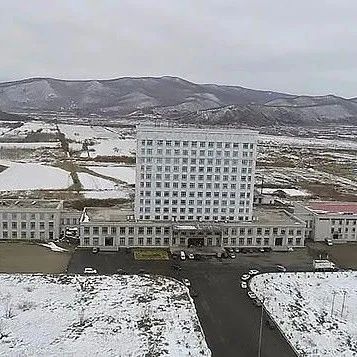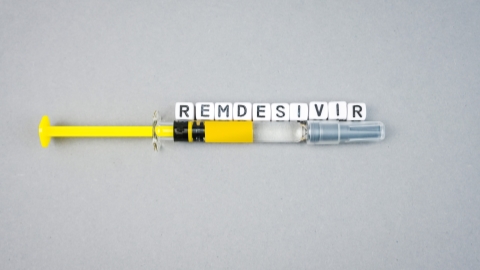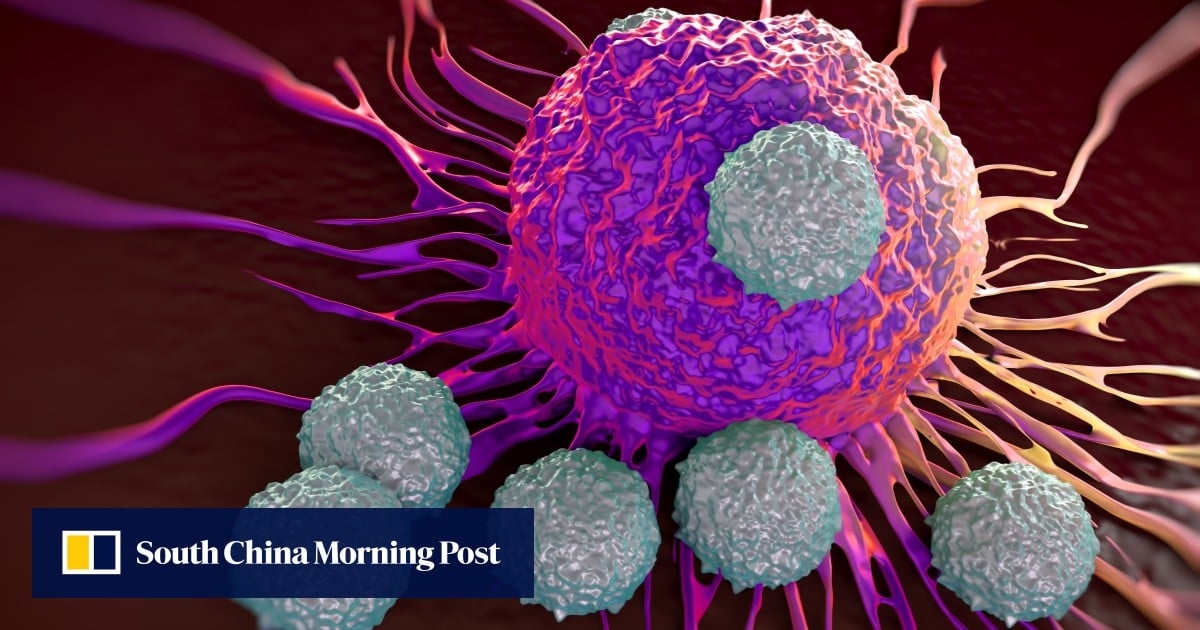Lorsqu'il y a un cas confirmé à bord, c'est tout l'avion ou presque qui est suspect ...80 cas suspects sur un seul vol...
¥ - Coronavirus (covid-19) suivi et évolution en Chine & Asie (pas de débats ici, utiliser "Politique de gestion du covid en Chine assouplie")
- Auteur de la discussion lafoy-china
- Date de début
Vous utilisez un navigateur non à jour ou ancien. Il ne peut pas afficher ce site ou d'autres sites correctement.
Vous devez le mettre à jour ou utiliser un navigateur alternatif.
Vous devez le mettre à jour ou utiliser un navigateur alternatif.
Anciennement oui car il n'y avait pas de quarantaine auto et si une personne était testée positive les gens autours d'elle dans le vol étaient mis en quarantaine à leur tour même si asymptomatiques mais là ils parlent de symptomatiques et d'hospitalisation avec de toute façon tout le reste du vol qui part en quarantaine hôtelière puisque c'est le cas de tous les vols depuis quelques semaines.Lorsqu'il y a un cas confirmé à bord, c'est tout l'avion ou presque qui est suspect ...
Bonjour ChrisLorsqu'il y a un cas confirmé à bord, c'est tout l'avion ou presque qui est suspect ...
En ce moment oui certainement + quarantaine ,et les services des douanes et les services sanitaires ont tout le temps necessaire , le nombre de pax par jour de l'etranger est de 3000 / jour pour tout aeroports Chine confondus d'apres les chiffres de la CAAC , c'est a dire quasiment un trafic nul !
Extrait : " And since the policy of further reducing international passenger flights - each airline is only allowed to maintain single route to any specific country with no more than one flight per week – was in place, a total of 112 international passenger flights have been received with approximately 21,000 inbound passengers, and the daily passenger number has dropped below 3,000, which has effectively helped curb the imported risks. "
Par ailleurs il sont en train de multiplier les tests pour les populations et ce a une grande echelle , a premiere vue !
Testing range to be expanded in major regions
At a meeting chaired by Premier Li, a decision was made to expand the range for nucleic acid and serum antibody tests.
China to guard against COVID-19 rebound
China will take further dynamic measures in border regions and expand virus testing to guard against a rebound of COVID-19.
Plan issued on re-examination of discharged COVID-19 patients
The State Council on April 8 issued a trial working plan on visits and re-examination of discharged COVID-19 patients.
Dernière édition:
Latest developments in epidemic control on April 12
Updated: Apr 12,2020 02:02 PM
BEIJING — Here are the latest developments on the novel coronavirus disease (COVID-19) in China:
— Chinese health authority said on April 12 that it received reports of 99 new confirmed COVID-19 cases on the Chinese mainland on April 11, of which 97 were imported.
Two new domestically transmitted cases were reported, both in Heilongjiang province. No death was reported on April 11.
— As of April 11, the mainland had reported a total of 1,280 imported cases. Of the cases, 481 had been discharged from hospitals after recovery, and 799 were being treated with 36 in severe condition.
— The overall confirmed cases on the mainland had reached 82,052 by April 11, including 1,138 patients who were still being treated, 77,575 people who had been discharged after recovery, and 3,339 people who died of the disease.
— On April 11, 63 new asymptomatic cases, including 12 from abroad, were reported on the mainland. A total of 14 asymptomatic cases, all imported, were re-categorized as confirmed cases, and 55 were discharged from medical observation including four imported cases.
— No new confirmed cases of the novel coronavirus disease were reported in Central China's Hubei province on April 11.
Hubei had 647 asymptomatic cases under medical observation by April 11 and 20 such cases were reported on April 11.
— Shanghai reported 52 imported cases of the novel coronavirus disease. Among them, 51 were on the same flight from Russia and another came from Canada.
A total of 92 people in close contact with the confirmed patients on the flight have been screened and put under quarantine.
— Northeast China's Heilongjiang province on April 11 reported two new confirmed COVID-19 cases transmitted locally and 21 new confirmed cases from overseas.
All the new imported cases were Chinese nationals returning from Russia. Of them, 14 were previously asymptomatic cases.
— Guangzhou had reported a total of 119 imported cases of the novel coronavirus disease as of midnight on April 11, said Guangzhou mayor Wen Guohui at a press conference on April 12.
The city had reported 58 cases of asymptomatic infection by April 11, of which 20 were from overseas.
— Guangzhou treats all foreign personnel equally and foreign residents should also abide by the local epidemic prevention regulations, officials said at a press conference on April 12.
"We take the same prevention and control measures for all personnel entering Guangzhou regardless of their nationality, race and gender," said Liu Baochun, director of the municipal foreign affairs office.
"Guangzhou is an open international metropolis and treats all foreign personnel equally. We oppose all forms of differentiation for a specific group of people," Liu said.
— South China's Guangdong province has demanded all school staff undergo nucleic acid tests before resuming work to lower the risk of novel coronavirus infection.
Guangdong will invite medical staff to instruct all schools to conduct epidemic prevention and control, with each school having at least one medical worker on campus.
 english.www.gov.cn
english.www.gov.cn
Updated: Apr 12,2020 02:02 PM
BEIJING — Here are the latest developments on the novel coronavirus disease (COVID-19) in China:
— Chinese health authority said on April 12 that it received reports of 99 new confirmed COVID-19 cases on the Chinese mainland on April 11, of which 97 were imported.
Two new domestically transmitted cases were reported, both in Heilongjiang province. No death was reported on April 11.
— As of April 11, the mainland had reported a total of 1,280 imported cases. Of the cases, 481 had been discharged from hospitals after recovery, and 799 were being treated with 36 in severe condition.
— The overall confirmed cases on the mainland had reached 82,052 by April 11, including 1,138 patients who were still being treated, 77,575 people who had been discharged after recovery, and 3,339 people who died of the disease.
— On April 11, 63 new asymptomatic cases, including 12 from abroad, were reported on the mainland. A total of 14 asymptomatic cases, all imported, were re-categorized as confirmed cases, and 55 were discharged from medical observation including four imported cases.
— No new confirmed cases of the novel coronavirus disease were reported in Central China's Hubei province on April 11.
Hubei had 647 asymptomatic cases under medical observation by April 11 and 20 such cases were reported on April 11.
— Shanghai reported 52 imported cases of the novel coronavirus disease. Among them, 51 were on the same flight from Russia and another came from Canada.
A total of 92 people in close contact with the confirmed patients on the flight have been screened and put under quarantine.
— Northeast China's Heilongjiang province on April 11 reported two new confirmed COVID-19 cases transmitted locally and 21 new confirmed cases from overseas.
All the new imported cases were Chinese nationals returning from Russia. Of them, 14 were previously asymptomatic cases.
— Guangzhou had reported a total of 119 imported cases of the novel coronavirus disease as of midnight on April 11, said Guangzhou mayor Wen Guohui at a press conference on April 12.
The city had reported 58 cases of asymptomatic infection by April 11, of which 20 were from overseas.
— Guangzhou treats all foreign personnel equally and foreign residents should also abide by the local epidemic prevention regulations, officials said at a press conference on April 12.
"We take the same prevention and control measures for all personnel entering Guangzhou regardless of their nationality, race and gender," said Liu Baochun, director of the municipal foreign affairs office.
"Guangzhou is an open international metropolis and treats all foreign personnel equally. We oppose all forms of differentiation for a specific group of people," Liu said.
— South China's Guangdong province has demanded all school staff undergo nucleic acid tests before resuming work to lower the risk of novel coronavirus infection.
Guangdong will invite medical staff to instruct all schools to conduct epidemic prevention and control, with each school having at least one medical worker on campus.
Latest developments in epidemic control on April 12
Northeast China's Heilongjiang province on April 11 reported two new confirmed COVID-19 cases transmitted locally and 21 new confirmed cases from overseas.
ca pose du reste le problème d'étanchéifier des frontières terrestres et maritimes en Chine comme ailleurs y compris certaines montagneuses ou peu hospitalières ce qui les rend difficile à garder. Idem au sud avec les pays d'asie du sud est qui a longtemps servi de couloir à des trafics en tout genre.Ouep quelques cas visiblement au heilongjiang. Mais les autorités sont réactives!

China Closes Border with Russia and Drives City under Lockdown
A Chinese city on the border with Russia has gone intomp.weixin.qq.com
Dernière édition:
Oui je me posais la question avec la Corée du Nord. Si ça part en sucette là bas, les habitants pourraient être tentés de passer la frontière.ca pause du reste le problème d'étanchéifier des frontières terrestres et maritimes en Chine comme ailleurs y compris certaines montagneuses ou peu hospitalières ce qui les rend difficile à garder. Idem au sud avec les pays d'asie du sud est qui a longtemps servi de couloir à des trafics en tout genre.
Je ne sais pas si on a des infos à ce propos.
ca pause du reste le problème d'étanchéifier des frontières terrestres et maritimes en Chine comme ailleurs y compris certaines montagneuses ou peu hospitalières ce qui les rend difficile à garder. Idem au sud avec les pays d'asie du sud est qui a longtemps servi de couloir à des trafics en tout genre.
Bah quand on voit que les migrants sont capables de traverser la mediterranee sur des radeaux de fortune ca relativise l'etancheite des frontieres quelle quelles soient.
Bah quand on voit que les migrants sont capables de traverser la mediterranee sur des radeaux de fortune ca relativise l'etancheite des frontieres quelle quelles soient.
Je pensais en effet plus à la méditerranée qu'à la Chine concernant les frontières maritimes.
Latest developments in epidemic control on April 13
Updated: Apr 13,2020 06:56 AM
BEIJING — Here are the latest developments on the novel coronavirus disease (COVID-19) in China:
— The China-Russia border city of Manzhouli in North China's Inner Mongolia autonomous region reported 34 new confirmed COVID-19 cases from overseas from 7:00 am to 4:00 pm on April 12, local health commission said.
All the patients were from Russia via Manzhouli, the largest land port on the China-Russia border.
— Chinese health authority said on April 12 that it received reports of 99 new confirmed COVID-19 cases on the Chinese mainland on April 11, of which 97 were imported.
Two new domestically transmitted cases were reported, both in Heilongjiang province. No death was reported on April 11.
— As of April 11, the mainland had reported a total of 1,280 imported cases. Of the cases, 481 had been discharged from hospitals after recovery, and 799 were being treated with 36 in severe condition.
— The overall confirmed cases on the mainland had reached 82,052 by April 11, including 1,138 patients who were still being treated, 77,575 people who had been discharged after recovery, and 3,339 people who died of the disease.
— On April 11, 63 new asymptomatic cases, including 12 from abroad, were reported on the mainland. A total of 14 asymptomatic cases, all imported, were re-categorized as confirmed cases, and 55 were discharged from medical observation including four imported cases.
— No new confirmed cases of the novel coronavirus disease were reported in Central China's Hubei province on April 11.
Hubei had 647 asymptomatic cases under medical observation by April 11 and 20 such cases were reported on April 11.
— Shanghai reported 52 imported cases of the novel coronavirus disease. Among them, 51 were on the same flight from Russia and another came from Canada.
A total of 92 people in close contact with the confirmed patients on the flight have been screened and put under quarantine.
— Northeast China's Heilongjiang province on April 11 reported two new confirmed COVID-19 cases transmitted locally and 21 new confirmed cases from overseas.
All the new imported cases were Chinese nationals returning from Russia. Of them, 14 were previously asymptomatic cases.
— Guangzhou had reported a total of 119 imported cases of the novel coronavirus disease as of midnight of April 11, said Guangzhou mayor Wen Guohui at a press conference April 12.
The city had reported 58 cases of asymptomatic infection by April 11, of which 20 were from overseas.
 english.www.gov.cn
english.www.gov.cn
Updated: Apr 13,2020 06:56 AM
BEIJING — Here are the latest developments on the novel coronavirus disease (COVID-19) in China:
— The China-Russia border city of Manzhouli in North China's Inner Mongolia autonomous region reported 34 new confirmed COVID-19 cases from overseas from 7:00 am to 4:00 pm on April 12, local health commission said.
All the patients were from Russia via Manzhouli, the largest land port on the China-Russia border.
— Chinese health authority said on April 12 that it received reports of 99 new confirmed COVID-19 cases on the Chinese mainland on April 11, of which 97 were imported.
Two new domestically transmitted cases were reported, both in Heilongjiang province. No death was reported on April 11.
— As of April 11, the mainland had reported a total of 1,280 imported cases. Of the cases, 481 had been discharged from hospitals after recovery, and 799 were being treated with 36 in severe condition.
— The overall confirmed cases on the mainland had reached 82,052 by April 11, including 1,138 patients who were still being treated, 77,575 people who had been discharged after recovery, and 3,339 people who died of the disease.
— On April 11, 63 new asymptomatic cases, including 12 from abroad, were reported on the mainland. A total of 14 asymptomatic cases, all imported, were re-categorized as confirmed cases, and 55 were discharged from medical observation including four imported cases.
— No new confirmed cases of the novel coronavirus disease were reported in Central China's Hubei province on April 11.
Hubei had 647 asymptomatic cases under medical observation by April 11 and 20 such cases were reported on April 11.
— Shanghai reported 52 imported cases of the novel coronavirus disease. Among them, 51 were on the same flight from Russia and another came from Canada.
A total of 92 people in close contact with the confirmed patients on the flight have been screened and put under quarantine.
— Northeast China's Heilongjiang province on April 11 reported two new confirmed COVID-19 cases transmitted locally and 21 new confirmed cases from overseas.
All the new imported cases were Chinese nationals returning from Russia. Of them, 14 were previously asymptomatic cases.
— Guangzhou had reported a total of 119 imported cases of the novel coronavirus disease as of midnight of April 11, said Guangzhou mayor Wen Guohui at a press conference April 12.
The city had reported 58 cases of asymptomatic infection by April 11, of which 20 were from overseas.
Latest developments in epidemic control on April 13 (1)
Senior high schools in Beijing will restart classes for seniors on April 27, who will take the national college entrance exam on July 7-10, according to municipal authorities.
Dernière édition:

COVID-19 patients' condition improves after receiving Remdesivir: study
A majority of a small group of patients treated with experimental drug Remdesivir for COVID-19 havewww.shine.cn
Interressant rien sur le remede de notre ami
Salut Mathieu,
J'ai lu une étude ce week end sur le même médicament qui montrait que cela aggravait les symptômes.
Non, les effets secondaires sur le covid-19 ne sont pas connues ou établis, l’historique de la chloroquine avec le virus Zika montre que la chloroquine peut aggraver la maladie.
Chloroquine et hydroxychloroquine ne sont pas tout à fait pareil. Surtout en termes d'effets secondaires et de possible résultats.
Pourrais-tu mentionner la source, ou un lien ?J'ai lu une étude ce week end sur le même médicament qui montrait que cela aggravait les symptômes.
Bonjour à tous,
Nous sommes un collectif de traducteurs, étudiants, doctorants, bref des gens avec un intérêt sur la Chine. Nous réalisons une revue de presse hebdomadaire sur la Chine basée sur les sources en Mandarin (autant l'officiel que le non officiel).
Je vous laisse évaluer notre dernière publication, le premier sujet étant consacré au COVID : https://eastisred.fr/passe-muraille-n57-semaine-du-6-avril/
Sachez par ailleurs que nous cherchons des volontaires pour des traductions ponctuelles,
hésitez pas à nous contacter par email !
Nous sommes un collectif de traducteurs, étudiants, doctorants, bref des gens avec un intérêt sur la Chine. Nous réalisons une revue de presse hebdomadaire sur la Chine basée sur les sources en Mandarin (autant l'officiel que le non officiel).
Je vous laisse évaluer notre dernière publication, le premier sujet étant consacré au COVID : https://eastisred.fr/passe-muraille-n57-semaine-du-6-avril/
Sachez par ailleurs que nous cherchons des volontaires pour des traductions ponctuelles,
hésitez pas à nous contacter par email !

Covid-19 may attack immune system like HIV, doctors fear
Researchers in China and the US find that the virus that causes Covid-19 can destroy the T cells that are supposed to protect the body from harmful invaders
Voice of América est intéressant même elle est assez noyautée par Pékin.
Tu peux préciser ???
Un hôpital US qui prescrivait la chloroquine en traitement standard a arrêté: pas de bénéfice mais de réels problèmes.
“We haven’t seen any clear evidence of benefit so we aren’t going to use hydroxychloroquine routinely anymore,” Chopra says. “We were initially recommending it to both inpatients and outpatients, but we’re no longer doing that routinely. That’s based upon the fact that we’ve been prescribing hydroxychloroquine for a few weeks, did not see therapeutic benefit, but did see adverse effects.”

 labblog.uofmhealth.org
labblog.uofmhealth.org
“We haven’t seen any clear evidence of benefit so we aren’t going to use hydroxychloroquine routinely anymore,” Chopra says. “We were initially recommending it to both inpatients and outpatients, but we’re no longer doing that routinely. That’s based upon the fact that we’ve been prescribing hydroxychloroquine for a few weeks, did not see therapeutic benefit, but did see adverse effects.”

Chloroquine, Ibuprofen and Beyond: Doctors Discuss Latest Treatments, and Treatment Rumors, For COVID-19
There are no therapies proven to prevent or treat COVID-19 yet, but providers can help address symptoms while they continue researching new ideas.
Il y a quand même une contradiction dans l'article :Un hôpital US qui prescrivait la chloroquine en traitement standard a arrêté: pas de bénéfice mais de réels problèmes.
“We haven’t seen any clear evidence of benefit so we aren’t going to use hydroxychloroquine routinely anymore,” Chopra says. “We were initially recommending it to both inpatients and outpatients, but we’re no longer doing that routinely. That’s based upon the fact that we’ve been prescribing hydroxychloroquine for a few weeks, did not see therapeutic benefit, but did see adverse effects.”

Chloroquine, Ibuprofen and Beyond: Doctors Discuss Latest Treatments, and Treatment Rumors, For COVID-19
There are no therapies proven to prevent or treat COVID-19 yet, but providers can help address symptoms while they continue researching new ideas.labblog.uofmhealth.org
1) "the strategy is to individualize these decisions for each patient, considering risks and benefits based on that person’s health history and symptoms. "
et
"providers are treating each patient individually, and making individual recommendations regarding the best option to improve people’s symptoms "
2) “because that’s the only way to figure out what works: do a proper clinical trial.”
Providers at Michigan Medicine are involved in several clinical trials, working to figure out how to offer people dealing with COVID-19 better options.
“All of the drugs we’re giving here are being administered in the context of clinical studies,”
Des études cliniques dans lesquelles on choisit quel patient recevra quel médicament, (au lieu de procéder en double aveugle, avec groupe témoin) me paraissent biaisées dès le départ.
Oh ! Quelle surprise... Juste au moment ou le Remdesivir pointe son nez !Un hôpital US qui prescrivait la chloroquine en traitement standard a arrêté: pas de bénéfice mais de réels problèmes.
“We haven’t seen any clear evidence of benefit so we aren’t going to use hydroxychloroquine routinely anymore,” Chopra says. “We were initially recommending it to both inpatients and outpatients, but we’re no longer doing that routinely. That’s based upon the fact that we’ve been prescribing hydroxychloroquine for a few weeks, did not see therapeutic benefit, but did see adverse effects.”

Chloroquine, Ibuprofen and Beyond: Doctors Discuss Latest Treatments, and Treatment Rumors, For COVID-19
There are no therapies proven to prevent or treat COVID-19 yet, but providers can help address symptoms while they continue researching new ideas.labblog.uofmhealth.org
 La nature est bien faite !
La nature est bien faite !C'est la loi du showbiz : une star chasse l'autre ...Oh ! Quelle surprise... Juste au moment ou le Remdesivir pointe son nez !La nature est bien faite !

L’hôpital ne faisait pas une étude pour prouver quoique ce soit.Il y a quand même une contradiction dans l'article :
1) "the strategy is to individualize these decisions for each patient, considering risks and benefits based on that person’s health history and symptoms. "
et
"providers are treating each patient individually, and making individual recommendations regarding the best option to improve people’s symptoms "
2) “because that’s the only way to figure out what works: do a proper clinical trial.”
Providers at Michigan Medicine are involved in several clinical trials, working to figure out how to offer people dealing with COVID-19 better options.
“All of the drugs we’re giving here are being administered in the context of clinical studies,”
Des études cliniques dans lesquelles on choisit quel patient recevra quel médicament, (au lieu de procéder en double aveugle, avec groupe témoin) me paraissent biaisées dès le départ.
il faisait du Raoult: donner le médoc à tout le monde. Maintenant ils sont plus précautionneux et font au cas par cas. Pour soigner, pas pour faire des études.


